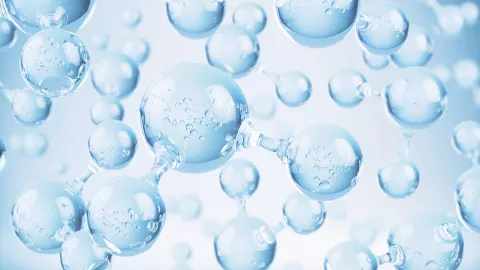Key data
Duration: 48 months
Financing: 10M €
Demonstrators: Portugal, Italy and United Kingdom
FLEXnCONFU is a project that aims to demonstrate how energy production in combined cycle power plants can be made more flexible and reusable, allowing for a smoother, more efficient and environmentally friendly operation in an energy market where the penetration of renewable energies is increasing. This demonstration will be done using hydrogen, or an ammonia carrier, as energy storage elements.
The demonstration pilot using hydrogen will be tested on an industrial scale at the Combined Cycle Power Plant in Ribatejo, while the solution with the ammonia carrier will be demonstrated on a laboratory scale.
FlexNConfu had its kick-off on April 6, 2020 and lasts 48 months, the last year being dedicated to demonstrating the operation of the pilot installation and model validation. Thus, the pilot project that will take place at Central do Ribatejo is scheduled for 2023. Further industrial and virtual tests will be carried out at plants and laboratories in the United Kingdom and Italy.
Main goals
- Demonstrate the flexibility of combined cycle power plants, using hydrogen, or an ammonia carrier, as energy storage elements.
- Evaluate the compatibility of the combustion system with non-conventional fuels, through the development of numerical models, and virtual and experimental validation in the laboratory of the combustion of mixtures of ammonia and hydrogen with natural gas. Emissions reduction impacts will also be determined, as well as the feasibility of converting conventional combustion systems.
- Survey the needs for flexibility and reference with other assets, determining the economic (LCA / LCC) and environmental rationale of P2H (power-to-Hydrogen) and P2A (power-to-Ammonia) solutions.

How does the Hydrogen Pilot Work?
The hydrogen will be produced locally in a 1MW PEM electrolysis device, compressed at 300 bar and stored, when the group is on a load descent (ramp-down). Later, it will be burned in the turbine, together with natural gas, to produce electricity when the group has favorable conditions (ramp-up).
With the pilot, we intend to:
- test in real context the integration of the P2H2P concept (power-to-hydrogen-to-power)
- increase the flexibility of the natural gas Combined Cycle Power Plants
- explore the concept of hydrogen energy storage
- determine the benefits in terms of reduced wear, decreasing the Group's starts and stops,
- determine the benefits in terms of efficiency and reduction of greenhouse gas emissions

What is water electrolysis?
Water electrolysis is the decomposition of water into oxygen (O2) and hydrogen (H2), resulting from the passage of an electric current. It was discovered by chemist William Nicholson and physicist Anthony Carlisle.
Since pure water is not a good electrical conductor, it takes an enormous amount of energy for electrolysis to happen. Without this excess energy, the electrolysis of pure water occurs very slowly. The effectiveness of electrolysis can be increased by adding an electrolyte (such as salt, an acid or a base) and / or using electro catalysts.
The investment on this technique originating from renewable sources for the production of hydrogen has been gaining popularity, namely as an energy vector for the energy transition and decarbonization of the economy.
Two technologies are commercially available: Alkaline electrolysis and Proton membrane electrolysis.
In the Pilot to be installed at the Ribatejo combined cycle power plant, hydrogen will be produced locally in an electrolyzer that will use the PEM technology of 1MWe, with a production capacity of 18 Kg / h at 30 bar. The hydrogen is subsequently compressed at 300 bar and stored in “tube trailer” type reservoirs.

The role of EDP Produção
EDP Produção participates in several stages of the project, leading the definition and implementation of the pilot hydrogen production facility and respective integration in the Ribatejo combined cycle plant.
NEW R & D will support the demonstration process at Central do Ribatejo, from requirements specification, to installation, operation and results analysis. In addition, NEW R & D will play an important role in the activities of the following work packages:
- definition of business use cases for the use of Power-to-Hydrogen solutions in providing system services to the electrical system;
- study of the use of H2 in other areas, such as mobility, injection in pipeline, among others;
- determination of the demonstrator's impacts in terms of increased flexibility and reduced environmental impact.
Key Numbers:
21 Partners
9 Work steps (WPs)
44 Tasks (58 deliverables)
48 months total project duration
12.6 M € Budget Total
2.1 M € Budget EDPP
70% EU Financing
Main Key Dates:
Project Start: April 2020
Layout and basic engineering: December 2020
Engineering Detail Development: June 2021
Beginning of Construction at Central: January 2022
Assembly of the electrolyze device at the plant: October 2022
Commissioning and beginning of activity: April 2023
Demonstration period: April 2023-April 2024

